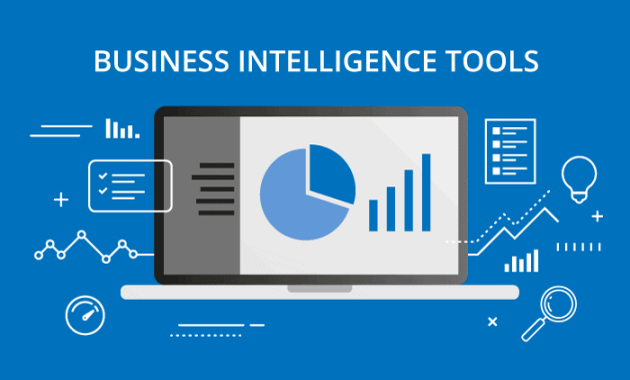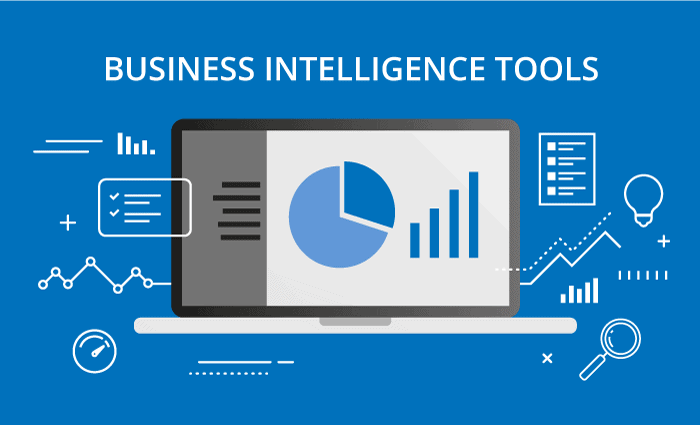
How 5 Business Intelligence Tools Can Make Faster Decisions
In today’s fast-paced business environment, the ability to make quick and informed decisions is no longer a luxury but a necessity. Businesses that can swiftly analyze data, identify trends, and act on insights gain a significant competitive advantage. This is where Business Intelligence (BI) tools come into play. These tools empower organizations to collect, process, analyze, and visualize data, leading to better and faster decision-making processes. This article explores how 5 business intelligence tools can help you make faster decisions, boosting your overall business performance.
The core function of business intelligence tools is to transform raw data into actionable insights. This transformation allows businesses to understand their performance, identify areas for improvement, and predict future trends. The ability to make faster decisions is a direct result of this. By providing readily available, clear, and concise information, BI tools eliminate the need for lengthy manual data analysis, allowing decision-makers to focus on strategy and execution. The key is to choose the right tools, tailored to your business’s specific needs.
Understanding the Power of Business Intelligence
Before diving into specific tools, it’s crucial to understand the fundamental principles of business intelligence. BI is not just about collecting data; it’s about creating a data-driven culture within your organization. This involves integrating data from various sources, such as CRM systems, marketing platforms, and financial databases. The goal is to create a single source of truth that everyone in the organization can access.
Effective BI implementation involves several key components: data collection and integration, data warehousing, data analysis, data visualization, and reporting. Each component plays a vital role in the overall process. When these components work together seamlessly, businesses can make informed decisions faster, leading to improved operational efficiency, increased revenue, and enhanced customer satisfaction. The tools discussed below excel in these areas.
Tool One: Tableau
Tableau is a leading data visualization tool renowned for its user-friendly interface and powerful analytical capabilities. It allows users to create interactive dashboards and reports that can be easily shared across the organization. Its drag-and-drop functionality makes it accessible even to those without extensive technical skills. Tableau’s strength lies in its ability to connect to a wide range of data sources, enabling businesses to consolidate data from various platforms into a single view. This consolidation is crucial for identifying patterns and trends that might be missed when analyzing data in silos. With Tableau, you can visualize complex data sets in a way that is easy to understand, accelerating the decision-making process.
Tableau’s features include:
- Interactive Dashboards: Create dynamic dashboards that update in real-time.
- Data Visualization: Generate compelling charts and graphs.
- Data Connectivity: Connect to various data sources seamlessly.
- Data Blending: Combine data from multiple sources for comprehensive analysis.
By leveraging Tableau, organizations can gain a deeper understanding of their data, leading to quicker and more informed decisions. It’s a powerful tool for anyone looking to improve their data analysis capabilities.
Tool Two: Microsoft Power BI
Microsoft Power BI is another popular BI tool, offering a comprehensive suite of features for data analysis and visualization. Integrated with the Microsoft ecosystem, Power BI provides a familiar interface for users already working with Microsoft products. It supports a wide range of data connectors and offers robust data modeling capabilities. Power BI’s ability to process large datasets quickly makes it an excellent choice for businesses of all sizes. Its affordability and ease of use further contribute to its popularity. Power BI also offers collaborative features, enabling teams to work together on data analysis and reporting. This collaboration is critical for ensuring that everyone has access to the latest insights and can make faster decisions based on the same information. This tool is an excellent choice for making faster decisions.
Key features of Microsoft Power BI include:
- Real-time Dashboards: Monitor key performance indicators (KPIs) in real-time.
- Data Modeling: Create complex data models for advanced analysis.
- Data Integration: Connect to various data sources, including Excel, databases, and cloud services.
- Collaboration: Share reports and dashboards easily with team members.
Power BI empowers businesses to transform raw data into actionable insights, leading to faster and more effective decision-making. Its versatility and user-friendly interface make it an invaluable asset for any organization.
Tool Three: Qlik Sense
Qlik Sense is a self-service BI platform known for its associative data modeling engine. This technology allows users to explore relationships within data, uncovering insights that might be missed by other tools. Qlik Sense emphasizes data discovery and exploration. This is valuable for businesses that want to empower their employees to analyze data independently. Its intuitive interface and interactive dashboards make it easy for users to drill down into the data and uncover hidden patterns. Qlik Sense also offers mobile BI capabilities, allowing users to access data and make faster decisions on the go. This is a critical advantage in today’s mobile-first world. This tool is great for making faster decisions.
Qlik Sense’s features include:
- Associative Data Modeling: Explore data relationships effortlessly.
- Data Discovery: Uncover hidden insights through interactive exploration.
- Mobile BI: Access data and make decisions on the go.
- Data Storytelling: Create compelling data stories to communicate insights.
Qlik Sense is an excellent choice for businesses looking for a flexible and powerful BI platform that emphasizes data exploration and discovery. It helps make faster decisions. [See also: Choosing the Right BI Platform for Your Business]
Tool Four: Sisense
Sisense is a business intelligence platform designed for complex data analysis and embedded analytics. It’s particularly well-suited for organizations dealing with large datasets and those looking to embed analytics into their applications. Sisense’s unique architecture allows it to handle massive amounts of data without compromising performance. This makes it a great choice for businesses that need to analyze data quickly and make faster decisions. Its embedded analytics capabilities enable companies to integrate BI directly into their products, providing users with real-time insights within their workflows. This direct integration streamlines the decision-making process and enhances the overall user experience. This tool is great for making faster decisions.
Key features of Sisense include:
- In-Chip Technology: Process large datasets quickly.
- Embedded Analytics: Integrate analytics into your applications.
- Data Modeling: Create complex data models for advanced analysis.
- Scalability: Handle growing data volumes.
Sisense empowers businesses to make faster decisions by providing powerful analytics capabilities and enabling them to embed insights directly into their operations. It is a good choice for organizations that need to make faster decisions.
Tool Five: Domo
Domo is a cloud-based business intelligence platform that offers a unified view of data from various sources. It focuses on providing real-time data insights and collaboration tools. Domo’s cloud-based architecture makes it easy to deploy and manage, and its user-friendly interface makes it accessible to users of all skill levels. The platform offers a wide range of pre-built connectors, making it easy to integrate data from various sources. Domo’s real-time data capabilities are particularly valuable for businesses that need to monitor their performance and make faster decisions. Its collaboration features enable teams to work together on data analysis and reporting. Domo is designed to help businesses make faster decisions. [See also: Data Visualization Best Practices for Business Intelligence]
Domo’s features include:
- Real-time Data: Monitor data in real-time.
- Cloud-Based: Easy to deploy and manage.
- Collaboration: Share insights and work together.
- Data Connectors: Connect to various data sources seamlessly.
Domo offers a comprehensive solution for businesses that need a cloud-based BI platform with real-time data insights and collaboration tools. It is a strong tool for making faster decisions.
Choosing the Right Tool for Your Business
Selecting the right business intelligence tool depends on your specific needs and goals. Consider the following factors:
- Data Sources: Identify the data sources you need to connect to.
- User Skills: Assess the technical skills of your team.
- Budget: Determine your budget for software and implementation.
- Scalability: Consider the future growth of your data volumes.
- Features: Evaluate the features that are most important to your business.
By carefully considering these factors, you can choose a BI tool that will help you make faster decisions and achieve your business objectives. The right business intelligence tools will transform how you gather and use data. Implementing the right tools boosts business performance.
The Benefits of Faster Decision-Making
The benefits of making faster decisions are numerous and far-reaching. Businesses that can quickly analyze data and act on insights gain a significant competitive advantage. This leads to improved operational efficiency, increased revenue, and enhanced customer satisfaction. Faster decision-making also allows businesses to respond more quickly to market changes and seize new opportunities. As a result, companies can innovate faster, adapt to disruptions, and stay ahead of the competition. The ability to make faster decisions is a key driver of success in today’s dynamic business environment.
Business intelligence tools provide the necessary foundation for making faster, more informed decisions. These tools are essential for any organization seeking to improve its performance and stay competitive. By leveraging the power of business intelligence, businesses can unlock valuable insights and make faster decisions that drive success. The correct business intelligence tools are vital for making faster decisions.
In conclusion, the five business intelligence tools discussed—Tableau, Microsoft Power BI, Qlik Sense, Sisense, and Domo—offer powerful capabilities for data analysis and visualization. By implementing these tools and fostering a data-driven culture, businesses can make faster decisions, improve their performance, and gain a competitive edge. The ability to make faster decisions is a key factor in today’s business world.

